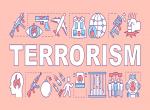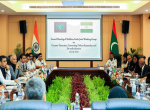How significant did the fifth meeting of SAARC Home/Interior Ministers held in Maldives on 24-26 September 2012 prove to be? It is difficult to answer this question exactly in qualitative terms, but quantitatively, the meet was noteworthy in three aspects.
- Continuity: The fact that the Home/Interior Ministers of eight countries of SAARC met in three succeeding years is itself important. The first meeting was in Dhaka in May 2006, and subsequently in New Delhi (October 2007), Islamabad (June 2010) and Thimpu (July 2011). The event was postponed twice in 2008 and 2009, but resumed in 2010. This is not a surprising development; even SAARC summits have witnessed discontinuities. The South Asian countries, instead of placing a request for rescheduling arising from non-availability of the ministers, can consider sending a junior representative. However, continuity is a clearly important trend in multilateral discussions.
- Scope: The practice of conducting SAARC Home/Interior Ministers meets is to review progress and challenges in implementation of the SAARC Regional Convention on Suppression of Terrorism and its Additional Protocol. Apart from this objective, the Fifth Meeting took up considerable number of issues at three levels. Firstly, among immigration authorities of SAARC nations; secondly, at the Home/Interior Secretaries level, and thirdly, among Home/Interior Ministers. The immigration officers had discussed trans-border crimes, terrorism and enhancing security measures within and beyond the region from the perspective of border guarding. The Home Secretaries on the other hand had a fixed agenda for discussions and endorsement for the Home Ministers. Apart from reviewing follow-up action of the decisions made during the fourth meeting held last year in Thimphu, the Ministers covered all issues related to terrorism, maritime security and piracy, combating trafficking in narcotic drugs and psychotropic substances, mutual assistance in criminal matters, cyber crimes, counterfeit currencies, arms smuggling and trafficking in women and children. The scope of issues that were discussed was indeed varied but subject to crucial follow-up action. If decisions fail to translate into reality, the meetings would remain as mere “talking shops”.
- Opportunity: The SAARC meeting provided an opportunity for the Indian Home Minister, Sushil Kumar Shinde and his Pakistani counterpart Rehman Malik to meet on the sidelines to discuss issues bilaterally. For the Indian Home Minister, the meeting was a first multilateral confabulation in his current capacity and also the first with his Pakistani counterpart. The meeting between the two came in the wake of the arrest and deportation of Abu Jundal from Saudi Arabia, one of the masterminds of 26/11. It is worth noting that it was a luncheon meeting hosted by Malik and discussions primarily veered on the 26/11 investigations and prosecution of its perpetrators. India is unhappy with the pace of prosecutions of the accused presently jailed in Pakistan, especially LeT commander Zakiur Rehman Lakhvi. The LeT/JuD chief, Hafeez Saeed is roaming freely and indulging in anti-India rabble rousing. Although Malik had assured Shinde that the 26/11 trial would be taken to its “logical conclusion”, India is not confident as there appears to be undue procrastination in the trial process. The Pakistani judges trying the case have changed five times; there have been long adjournments on flimsy grounds; lack of witness protection; and thus far, Pakistan has disallowed the Indian National Investigation Team (NIA) to examine the witnesses in Pakistan. Thus, India believes that Pakistan is not serious about the issue.
The Government of Pakistan has placed a request to allow a second visit of its Judicial Commission to collect further evidence from the Indian judicial magistrate who had recorded the statement from Ajmal Kasab; the investigating officer in the 26/11 case, and the two doctors who had performed a postmortem of the remaining nine terrorists killed by the Indian security forces in the operations. Home Minister Malik posited that the first visit by the Pakistani Judicial Commission in March 2012 could not collect creditable information with an “evidential value”. For India, before processing this request, it is imperative that the Indian NIA team be permitted to visit Pakistan and examine all the evidences collected so far by Pakistani investigators and prosecutors. India also requires the original voice samples of those who were controlling the attack from Pakistan in the operation. These are not forthcoming from the Pakistani side, inspite of a promise to do so.
South Asia is one of the most troubled and vulnerable regions in the world; most of the major terrorist incidents have occurred in this geographic area. The terror groups that are responsible, ironically, enjoy the support of state and non-state actors of South Asian countries. Even so, the SAARC regional organization has been bound in effectively addressing the issue of terrorism. It is not that steps have been taken so far. The SAARC Regional Convention on Suppression of Terrorism, one of the oldest regional conventions on terrorism, was signed on 04 November 1987 and came into force on 22 August 1988 following its ratification by all member states. The Additional Protocol to the Convention came into force on 12 January 2006. The challenge is the absence of an enabling legislation within member states to give effect to these Agreements and, above all, enough political will in implementing them. Unless all SAARC countries consider terrorism as a common enemy and take appropriate counter- measures, the region will sink together.
Published Date: 17th October 2012









Post new comment